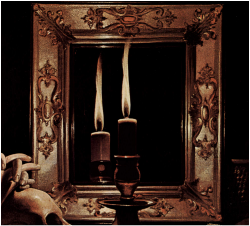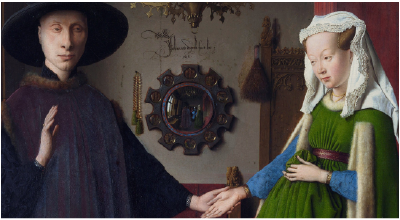- Will a lunar eclipse occur at the time of a new Moon, full Moon, or quarter-Moon?
- Will a solar eclipse occur at the time of a new Moon, full Moon, or quarter Moon?
 The radius of Jupiter’s orbit is approximately five times the radius of Earth’s orbit around the Sun. How much different is the intensity of the Sun’s radiation at Jupiter compared to that at Earth? The radius of Jupiter’s orbit is approximately five times the radius of Earth’s orbit around the Sun. How much different is the intensity of the Sun’s radiation at Jupiter compared to that at Earth?
- What optical device is used in eyeglasses? Why?
 What does a negative magnification indicate? What does a negative magnification indicate?
 Distinguish between specular reflection and diffuse reflection and give an example of each. Distinguish between specular reflection and diffuse reflection and give an example of each.
 Describe the concept of parallax and its application for locating the image formed by a plane mirror. Describe the concept of parallax and its application for locating the image formed by a plane mirror.
 After waxing a car, Daniel can see his own face in it. Is this an example of specular or diffuse reflection? Explain. After waxing a car, Daniel can see his own face in it. Is this an example of specular or diffuse reflection? Explain.
 Brian is spear fishing and having some trouble. Even though he aims his spear directly at the fish he sees in the water, he misses every time. What property of light causes this? Explain. Brian is spear fishing and having some trouble. Even though he aims his spear directly at the fish he sees in the water, he misses every time. What property of light causes this? Explain.
 Do any surfaces exhibit neither specular nor diffuse reflection? Do any surfaces exhibit neither specular nor diffuse reflection?
- At what angle is the normal line drawn to the boundary?
- You receive a coded message. The phrase is reversed left to right, and all the letters are backward. What should you do to decode the message? Why?
- What is the most important safety consideration for using a laser pointer?
- What is an advantage of using a ring stand to mount a flashlight for a laboratory investigation, rather than having your partner hold the flashlight?
 A small figurine is located in front of a plane mirror. Describe a procedure for determining the location of the image of the figurine in the mirror. A small figurine is located in front of a plane mirror. Describe a procedure for determining the location of the image of the figurine in the mirror.
| |  Explain the term “mirror image.” Explain the term “mirror image.”

 Look at the detail from Candle in Mirror, a painting by Georges de la Tour. Why does the image of the candle appear to be lower than the candle itself? Provide at least two possible explanations. Look at the detail from Candle in Mirror, a painting by Georges de la Tour. Why does the image of the candle appear to be lower than the candle itself? Provide at least two possible explanations.
 On a sheet of graph paper, draw a straight line in the middle to represent a plane mirror. Draw a small, filled circle located 7.3 cm in front of the mirror. Draw two light rays from the filled circle that are incident upon the mirror’s surface. Use a protractor and the law of reflection to draw the reflected ray for each incident ray. Extend the reflected rays and locate the image for the filled circle. Using your drawings on the graph paper and a metric ruler, determine the image distance. On a sheet of graph paper, draw a straight line in the middle to represent a plane mirror. Draw a small, filled circle located 7.3 cm in front of the mirror. Draw two light rays from the filled circle that are incident upon the mirror’s surface. Use a protractor and the law of reflection to draw the reflected ray for each incident ray. Extend the reflected rays and locate the image for the filled circle. Using your drawings on the graph paper and a metric ruler, determine the image distance.
 How can ray diagrams address both the ray and wave models for light? How can ray diagrams address both the ray and wave models for light?
 Do any surfaces not follow the law of reflection? How does light behave differently at these surfaces? Do any surfaces not follow the law of reflection? How does light behave differently at these surfaces?
 How does the law of reflection affect drawing ray diagrams? How does the law of reflection affect drawing ray diagrams?
 What property of a spherical mirror defines its center of curvature? What property of a spherical mirror defines its center of curvature?

 In the 1434 Jan Van Eyck work The Arnolfini Portrait, the artist painted a mirror behind his subjects. By looking at the nature of the images in the reflection, what kind of mirror is it? In the 1434 Jan Van Eyck work The Arnolfini Portrait, the artist painted a mirror behind his subjects. By looking at the nature of the images in the reflection, what kind of mirror is it?
|

